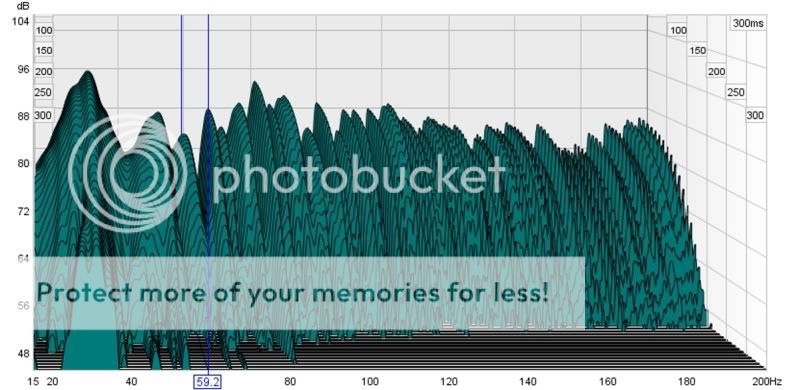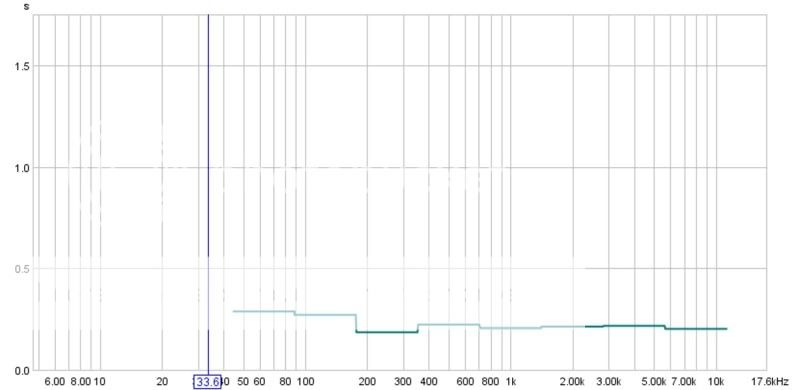You are using an out of date browser. It may not display this or other websites correctly.
You should upgrade or use an alternative browser.
You should upgrade or use an alternative browser.
Sound absorption - what's audible?
- Thread starter JTC
- Start date
ToTo Man
the band not the dog
Agreed.decay time is the key issue to fix...what I have now though is bass notes that start and stop...don't blurr/drone into the next music times so much better...ambience is bigger detail is much better...clarity and layers to the music is huge step forward...get the RT60 short.
Julf
Facts are our friends
as for 32Hz, what plays down that low anyway ?
Organs?
Singslinger
pfm Member
This. Can't understand what Martin is thinking of here either.
You can minimise the room's negative contributions (we all have them to a degree) by careful set up and positioning of speakers and listening position. The room will make the biggest contribution to what you hear, even if it's not as much fun as box swapping.
After that, if any annoying aspects of the room acoustic persist they can be managed by some attention to physical means such as furnishings or treatments, room correction software or a bit of both. The less that can be left to correction the better, but it too can be very helpful and relatively inexpensive. Provided the kit is competent none of that needs changing to combat room effects, the road to Hell lies in that direction.
Agreed.
Or you could just use an amp with tone controls and cut the bass when there's boom.
Rodney gold
Im just me...
That RT 60 is terrible in the low bass - believe me , fixing that overhang will go a long way to crisping and tightening all the bass as well as improving mids etc .. the way to fix it is to eq the peak out , which will in turn fix the RT60.
300ms is a fine cut off point , and even if you did extend the cut off point to 500 - the graph would still be very lumpy with that peak.. you really need to do something about it.
300ms is a fine cut off point , and even if you did extend the cut off point to 500 - the graph would still be very lumpy with that peak.. you really need to do something about it.
Rod, you can't "fix" reverberation by using EQ. All you are doing is removing energy from the signal and in many cases you are being very heavy handed about it. I'm a deal with the problem rather than messing about with the symptoms.
Yes, I know you agree with me, and EQ is helpful..ish.
Yes, I know you agree with me, and EQ is helpful..ish.
Rodney gold
Im just me...
You can fix low bass resonances with eq , if he had to flatten the 32 hz peak the RT60 graph will show it.
Meridian do it with their MRC , they ask you to input a RT60 time for the lower bass under 200hz and use DSP notch filters etc to achieve it
Meridian do it with their MRC , they ask you to input a RT60 time for the lower bass under 200hz and use DSP notch filters etc to achieve it
Personally, I doubt that hump at around 30 is a big problem as has been said already.
To get rid of that is a very big ask, but doable with some products.
Question is will you like the result - you may just like what it does without knowing
I think this is pretty close to your graph -

And the RT60 time of this as a graph :-

Interestingly, with that RT60, the time literally doubles if I leave the door open and remove the movable trap from in front of it.
I'm hazarding a guess the door acts as a kind of 'tuned port' for the room
I'm fairly certain GIK do some new smallish traps that can be tuned to that low frequency, but their range of absorption is small - obviously.
I absolutely agree with those who say lowering the RT60 to a lower figure will help you.
To get rid of that is a very big ask, but doable with some products.
Question is will you like the result - you may just like what it does without knowing
I think this is pretty close to your graph -

And the RT60 time of this as a graph :-

Interestingly, with that RT60, the time literally doubles if I leave the door open and remove the movable trap from in front of it.
I'm hazarding a guess the door acts as a kind of 'tuned port' for the room
I'm fairly certain GIK do some new smallish traps that can be tuned to that low frequency, but their range of absorption is small - obviously.
I absolutely agree with those who say lowering the RT60 to a lower figure will help you.
JTC
PFM Villager...
It would be very handy if there were someone nearby with a heap of room treatments, a big van and a liking for home made curry.... see where I'm going with this.
I think I'll put a trap in the one corner where it's easy to do - can't hurt - but first I will do a re-measurement from the new sitting position (further into the room) and with the mic vertical as advised...
I think I'll put a trap in the one corner where it's easy to do - can't hurt - but first I will do a re-measurement from the new sitting position (further into the room) and with the mic vertical as advised...
JTC
PFM Villager...
Sonority: I have to ask: does your room have a maximum length of around 18 to 20 feet? Your room measurement *is* very similar to mine in the lower bass, although it looks cleaner further up the frequency range. If so, would you mind detailing how you have it laid out and what trapping, etc., you are actually using and where?
Werner
pfm Member
For stereo you point it at the speakers and do not forget that the mic will become (more) directional with rising frequency. Not that this matters, as in-room treble measurements are useless. In the bass the typical small-diaphragm measurement mics used are near-perfect omnis.
For surround the mic goes vertical to ensure that all speaker channels get treated with the same mic response.
For surround the mic goes vertical to ensure that all speaker channels get treated with the same mic response.

